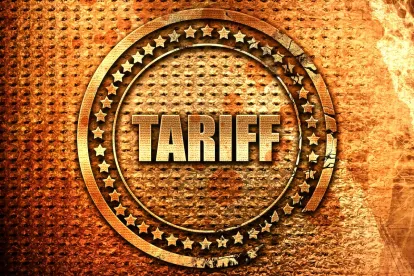Section 301 of the Trade Act of 1974 authorizes the president to take all appropriate action, not only tariff-based but also non-tariff-based retaliation, to address any unfair act, policy, or practice of a foreign government burdening United States commerce.
The United States Trade Representative (USTR) has imposed four rounds of tariffs on China-Origin goods following its Section 301 investigation of China’s technology transfer, intellectual property and related innovation policies and practices.
Prior to the Trump administration, the U.S. used Section 301 authorization primarily to build cases before the World Trade Organization (WTO), but the Trump administration used it to justify unilateral actions in an attempt to mend the problems faced by disadvantaged U.S. firms due to certain unjustifiable or unreasonable Chinese trade practices.
Previously, tariffs ranging from 7.5 percent to 25 percent were imposed on approximately $370 billion worth of annual U.S. imports from China back in 2018. These tariffs were divided into two stages:
-
Tariffs on List 1 goods ($34 billion) became effective on July 6, 2018
-
Tariffs on List 2 goods ($16 billion) became effective on Aug. 23, 2018
-
Additional rounds of tariffs on List 3 goods ($200 billion) and List 4A goods ($126 billion) were imposed subsequently, which became effective on Sept. 24, 2018 and Sept. 1, 2019 respectively
President Biden’s Trade Policy and USTR’s Recent Announcement
USTR’s Section 301 investigation and the tariff actions that followed served as leverage for the Trump administration to sign a Phase One Trade Agreement with China in January 2020, which included a commitment by China that it would expand the import of various U.S. products and services by no less than $200 billion for the next two years.
Upon transition of the presidency, President Biden tapped Katherine Tai as U.S. Trade Representative. Taking that role, she inherited ongoing tariffs and half-finished investigations undertaken by her predecessor. Any substantial changes to the keynote for U.S.-China trade policy to defend against market-disruptive practices by China have not been made yet.
On May 3, 2022, the Office of the USTR announced a process for considering the extension of the Section 301 tariffs against Chinese goods, pursuant to a provision that requires such tariffs to expire on the four-year anniversary of their imposition (July 6, 2022 and Aug. 23, 2022), unless domestic beneficiaries of the tariffs request their extension.
There is a keen interest now on what changes might result from USTR’s statutory review as there exists a demand for lowering tariffs on Chinese products to address record high inflation and other issues, as well as a need to ramp up the pressure on China to fulfill the trade obligations including buying more U.S. goods under the Phase One Agreement.
Facts about this Four-Year Review
Below are the main prongs of USTR’s review, which will likely be of interest and importance to a broad range of entities entangled in the trade of China-Origin goods.
Scope. All of List 1, 2, 3, and 4A tariff actions will be examined under this statutory review. In addition, USTR clarifies that two other modifications to the List 1 and 2 actions: 1) product exclusions to address the COVID pandemic and 2) certain reinstated exclusions that would be covered. This means that related parties are invited to comment on the continuation of all four of the China Tariff Lists and the following modifications currently in effect.
Timeline. The first phase of the review process is primarily aimed at the domestic parties benefiting from these Section 301 tariffs. Any representative of a domestic industry that benefit from either of the two actions including List 1 and List 2, as modified by List 3 and 4A and the aforementioned product exclusions, may submit a request for continuation using the portal corresponding to the tariff action at https://comments.ustr.gov/s/, according to the following schedule:
-
List 1 action (as modified): May 7, 2022 ~ July 5, 2022
-
List 2 action (as modified): June 24, 2022 ~ Aug. 22, 2022
In second phase of the review, USTR will announce whether it has received a request for continuation from a representative of a domestic industry which benefits from the Section 301 China tariffs. If USTR receives such a request, it will announce the continuation of the action, and will undertake a review of the action. USTR will then open a separate portal for interested persons to submit comments on, among other matters, the effectiveness of the actions in achieving the objectives of Sections 301, other actions that could be taken, and the effects of such actions on the U.S. economy, including on consumers.
This part of the review presumably would permit various interested persons and entities, including importers of China-Origin goods the opportunity to request the elimination and/or modification of Section 301 tariffs on particular goods. USTR has not announced specifically when it would initiate or conclude that comment proceeding, or when it would reflect any resulting changes to the tariffs.
In order to timely respond to these uncertainties, interested persons or entities, such as importers who wish to eliminate or lower the tariff burdens, should consider checking on the progress of the first phase of review and prepare their opinions and supporting data.
Standing to Participate and Other Grey Areas
As prescribed in Section 307(c) of the Trade Act, USTR notices that both of the List 1 and List 2 actions under Section 301, as modified, will terminate on their four-year anniversary dates (i.e., July 6 and Aug. 23, 2022, respectively) unless a representative of the domestic industry which benefits from the tariffs during the last 60 days of such a four-year period submits a written request for the continuation of the tariffs.
Yet, the notice does not give a clear answer on how USTR will determine whether any entity or person is a representative of a domestic industry benefiting from the tariffs and has a standing to request for continuation. The notice also does not clarify whether the review might result in the continuation or termination of Section 301 tariff in its entirety or only certain tariffs discussed in the comment proceeding.
Relevant Surroundings and Impacts on U.S.-China Trade
This statutory four-year review of Section 301 China tariffs presents an opportunity for the Biden administration to examine the economic effect of current tariff barrier imposed upon China-Origin products and to re-design U.S.-China trade policies.
Even though there has been no definitive commentary on removing the tariffs or a specific time frame for making a final decision, it seems clear that the Biden administration will make a comprehensive review not just addressing the unjustifiable trade practices of China which led to imposing Section 301 tariff at the outset, but also considering the tariff’s overall impact on prices in the midst of high level of inflation triggered by post-COVID disruption of global supply chains, Russia’s invasion of Ukraine, among others such as national security, industrial policy and domestic development.
Across the board, this will be a complicated decision for Biden administration. Eliminating the tariffs could ease inflation and benefit U.S. consumers and import-related businesses. Though it could also damage domestic producers’ price competitiveness, weaken U.S.’ leverage on bilateral trade deal with China and challenge China’s engagement with Russia-related matters.
Importers and others affected by these tariffs should consider filing written comments.
Soyoung Yang also contributed to this article. Soyoung is a Legal Fellow at Barnes & Thornburg.





 />i
/>i

